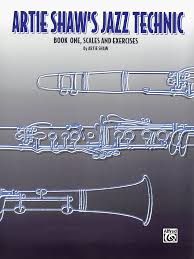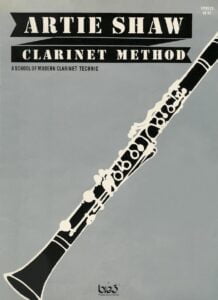Table of Contents
Come join us now, and enjoy playing your beloved music and browse through great scores of every level and styles!
Can’t find the songbook you’re looking for? Please, email us at: sheetmusiclibrarypdf@gmail.com We’d like to help you!
Happy birthday, Artie Shaw, born on this in 1910!
Artie Shaw: The Clarinet Virtuoso Who Redefined Swing
Artie Shaw (born Arthur Jacob Arshawsky, May 23, 1910 – December 30, 2004) was one of the most innovative and influential clarinetists in jazz history. A virtuoso musician, bandleader, and composer, Shaw rose to fame during the swing era, rivaling even Benny Goodman in popularity. His sophisticated arrangements, harmonic innovations, and relentless pursuit of musical perfection set him apart from his contemporaries.

Best Sheet Music download from our Library.
Beyond his musical genius, Shaw was a complex and often controversial figure—an intellectual who despised the commercialism of the music industry, a perfectionist who disbanded successful groups at the height of their fame, and a man who married eight times, including high-profile relationships with actresses like Ava Gardner and Lana Turner.
Browse in the Library:
Or browse in the categories menus & download the Library Catalog PDF:

Please, subscribe to our Library.
If you are already a subscriber, please, check our NEW SCORES’ page every month for new sheet music. THANK YOU!
Biography
Early Life and Musical Beginnings
Born in New York City to Jewish immigrant parents, Shaw grew up in New Haven, Connecticut. He picked up the saxophone at 13 and soon switched to the clarinet after hearing jazz recordings. By his late teens, he was playing professionally in dance bands and pit orchestras.
In the early 1930s, Shaw worked as a session musician in New York, playing with musicians like Red Nichols and Roger Wolfe Kahn. He briefly left music in 1934, disillusioned with the industry, but returned in 1935 after hearing the innovative swing arrangements of African-American bands like Fletcher Henderson’s.

Rise to Fame
Shaw formed his first orchestra in 1936, but it was his 1938 recording of “Begin the Beguine” (a Cole Porter song arranged in a swinging rumba style) that catapulted him to stardom. The record sold over a million copies, making him a household name.
His band became one of the most popular in the country, featuring musicians like trumpeter Billy Butterfield and drummer Buddy Rich. Shaw’s 1938-1939 orchestra was groundbreaking for its integration of jazz, classical, and Latin influences.
Perfectionism and Hiatuses
Shaw was notoriously self-critical. He disbanded his first successful orchestra in late 1939, exhausted by fame. He returned in 1940 with a new band, featuring a string section—an unusual choice for a swing orchestra—and recorded hits like “Frenesi” and “Stardust.”
During World War II, he led a Navy band in the Pacific, entertaining troops. After the war, he formed a bebop-influenced group, the Gramercy Five, experimenting with modern jazz harmonies. However, disillusioned with the music business, he retired from performing in 1954, though he occasionally returned for special performances.
Later Life and Death
After leaving music, Shaw pursued writing (he authored fiction and an autobiography), produced films, and lectured on music. He remained a sharp critic of the entertainment industry until his death in 2004 at age 94.

Music Style: Innovation in Swing and Beyond

Shaw’s music was marked by:
- Technical brilliance – His clarinet playing was fluid, precise, and harmonically adventurous.
- Classical influences – He admired Debussy, Stravinsky, and Bartók, incorporating extended harmonies into jazz.
- Latin rhythms – “Begin the Beguine” and “Frenesi” blended swing with Afro-Cuban grooves.
- String arrangements – His 1940-41 band used violins, creating a lush, symphonic swing sound.
- Bebop experiments – His postwar Gramercy Five recordings anticipated cool jazz.
Signature Licks and Harmonic Approaches
Shaw’s improvisations were melodically inventive. Some key elements:
- Fluid Arpeggios – He often used sweeping, clarion-register arpeggios (e.g., his solo on “Stardust”).
- Chromaticism – He employed chromatic passing tones for tension (hear “Concerto for Clarinet”).
- Alternate Fingerings – Shaw used false fingerings for unique timbres, especially in upper registers.
- Harmonic Substitutions – His Gramercy Five recordings (like “The Grabtown Grapple”) used altered chords akin to bebop.

Influences
Shaw was shaped by:
- Jazz clarinetists: Benny Goodman, Jimmie Noone.
- Classical composers: Igor Stravinsky, Claude Debussy.
- African-American jazz: He credited Black musicians (e.g., Louis Armstrong, Duke Ellington) as key inspirations.

Legacy
- Clarinet Innovation: Shaw expanded the instrument’s technical and expressive range.
- Integration of Genres: He merged jazz with classical and Latin music long before “crossover” was common.
- Bandleading: His orchestras were among the most polished of the swing era.
- Cultural Impact: His fame helped popularize jazz beyond dance halls.
Major Works
Hit Recordings
- “Begin the Beguine” (1938) – His breakthrough hit.
- “Stardust” (1940) – A definitive jazz interpretation.
- “Frenesi” (1940) – A Latin-tinged smash.
- “Concerto for Clarinet” (1940) – A jazz-classical hybrid.
- “Summit Ridge Drive” (1940) – A small-group gem.
Albums (Selected)
- Artie Shaw and His Orchestra (1938-1945 compilations)
- The Complete Gramercy Five Sessions (1940-45)
- Self Portrait (box set, 2001)
Filmography
Shaw appeared in several films:
- Dancing Co-Ed (1939) – Featured his orchestra.
- Second Chorus (1940) – Starred as himself alongside Fred Astaire.
- Freddie Steps Out (1946) – Cameo.
Documentaries about Shaw:
- Artie Shaw: Time Is All You’ve Got (1985, Oscar-winning documentary).
- Artie Shaw: Quest for Perfection (2002).
Discography (Essential Tracks)
- “Begin the Beguine” (1938) – Listen Here
- “Stardust” (1940) – Listen Here
- “Frenesi” (1940) – Listen Here
- “Concerto for Clarinet” (1940) – Listen Here
- “The Grabtown Grapple” (1945, Gramercy Five) – Listen Here
Artie Shaw was a genius who refused to be confined by genre or commercial expectations. His clarinet playing remains a benchmark for technical mastery and creativity, and his recordings continue to inspire jazz musicians today. Though his career was marked by abrupt departures and self-imposed exiles, his contributions to music—both as a performer and an innovator—are undeniable.
For those seeking to understand the depth of swing-era jazz, Shaw’s work is essential listening. His legacy endures not just in his recordings, but in the countless musicians he influenced, from Buddy DeFranco to contemporary jazz clarinetists.
Further Reading & Viewing
- Books: The Trouble with Cinderella: An Outline of Identity (Shaw’s autobiography).
- Documentary: Artie Shaw: Time Is All You’ve Got (1985) – Excerpt Here.
- Performance Clips: Artie Shaw’s 1954 TV appearance.
Artie Shaw’s music remains a testament to the power of artistic integrity and innovation—an enduring voice in the story of jazz.
